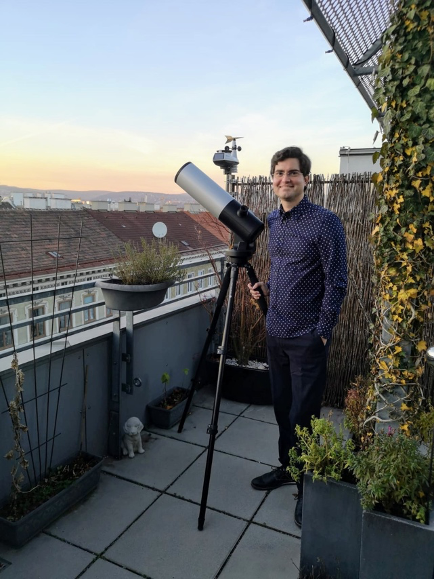Interplanetary threat or human-made traveler? That’s the mystery of 2020 SO1, a Near-Earth Asteroid (a population of asteroids with an orbit very close to Earth), discovered in August 2020 by the Hawaiian ground-based telescope Pan-STARRS1.
After spotting 2020 SO1, astronomers observed it continuously and estimated that this small 5m-asteroid would pass near Earth on December 1, 2020. Several citizen astronomers around the world, including members of the Unistellar network, collaborated to capture it. And one of them got it!
Mario Billiani, a Unistellar citizen astronomer located in Vienna, Austria, captured the object from his home. The observation was challenging because the target was faint for the 4.6” aperture digital telescope, and it was moving very fast in the sky. Together with our science team at the SETI Institute, Mario learned how to calculate the asteroid’s location from his home using the NASA-JPL ephemeris.

We reported Mario’s observation to the Minor Planet Center and, along with other observations taken by professional and amateur astronomers around the world, will help refine 2020SO1’s orbit.
The video below clearly shows how unusual this orbit is. In March 2020, after a close encounter with Earth, the body will stay in the so-called Hill sphere (the gravitational sphere of influence around Earth) and come back near Earth in February. It will leave the Earth-Moon system in March.
There are strong suspicions that this asteroid is not, in fact, a relic of the formation of our solar system, but instead a human-made object. Soon after its discovery, astronomers pointed out its orbit, which is very similar to Earth’s. Additionally, they noticed that this is an unusually slow asteroid, ten times slower than most asteroids. Finally, they think they have measured a small deflection on its orbit, which could be due to an interaction with the solar wind, as if the object was bright and hollow.
This asteroid may be, in fact, a Centaur upper rocket booster that launched NASA's Surveyor 2 lander to the moon in 1966. Now, 50 years later, has the rocket part returned to us as simulated in the peculiar orbit shown below?
The only way to be 100 percent certain is to image 2020 SO1 directly; that’s only possible through telescopes equipped with adaptive optics when it is very close to us. Alternatively, we can continue to observe it and confirm this interesting but unnatural deflection.
Yesterday, a team of astronomers led by Vishnu Reddy from the University of Arizona announced that they managed to observe this object with the NASA IRTF telescope located in Hawaii on the top of Mauna Kea. The spectrum, which is the decomposition of the asteroid’s light in a wide range of color, seems to be similar to a Centaur D rocket booster launched in 1971 and currently in geostationary orbit.
This exciting result needs to be confirmed, but it implies that 2020SO1 is human-made if it is true. We thought we had found a new moon for Earth, but this may be debris we left in the solar system. Definitely less appealing or romantic.
If you missed it, don’t worry - it will be back in February 2021. We may be able to observe it then, even with a small telescope.
In the meantime, look up and enjoy the universe, which is always full of mysteries.
Clear skies
Franck M.
Video of our observations:
Orbit: http://orbitsimulator.com/gravitySimulatorCloud/simulations/1602538229396_2020SO_Oct12solution.html






